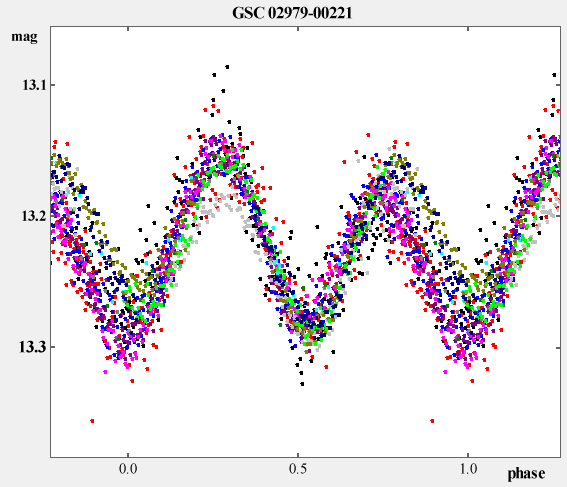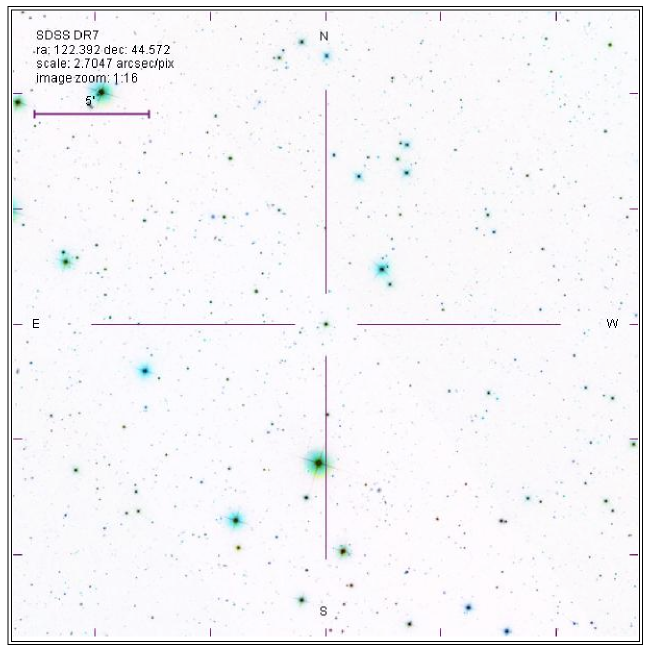| Article in PDF |
"Peremennye Zvezdy", Prilozhenie, vol. 11, N 22 (2011) |
Discovery of Variability for GSC 02979-00221
R. McDaniel
Fort Worth, Texas, USA
| ISSN 2221–0474 |
Received: 8.03.2011; accepted: 31.05.2011
(E-mail for contact: ron@soft-tec.com)
| ||||||||||||||||||||||
Remarks: |
| The variability of star GSC 02979-00221 was recently discovered while doing routine
time series photometry runs on DSCT variable SZ Lyn. The first run showing the variability
was accomplished on 21 Jan 2011 and runs are currently continuing. The star varies
13.14 to 13.27V magnitude. The period is 0.38976d. From observations in BVRI,
the observed color indices b–v = 0.63, v–r = 0.40, and r–i = 0.30
correspond to G2,
F5, and
G0 spectral types of main-sequence according to Table 15.7 in Cox (2000).
This, combined with the light curve data, leads one to believe the star is a close
or contact binary system of either W UMa (EW) type or possibly an ellipsoidal (ELL).
Additional
information from other catalogs seems to support these assumptions e.g. 2MASS J–K
is 0.33 indicating a possible G dwarf.
The observatory is the Monroe Robotic Observatory of the University of North Texas. The observing equipment consists of a Celestron C11 with an Optec F5 focal reducer on a Paramount ME mount. The camera is an SBIG ST8 CCD with an Optec IFW and Bessel BVRcIc filter set. Additionally, the system uses an Optec TCF-S focuser. Softwares used are Mira Pro 7 UE for images processing and photometry and Peranso v2.0 for period analysis. |
| References: |
| Cox, A.N. (ed.), 2000, Allen's Astrophysical Quantities, Edition 4, New York: Springer |
Light Curve
Finding Chart 
Data Source |